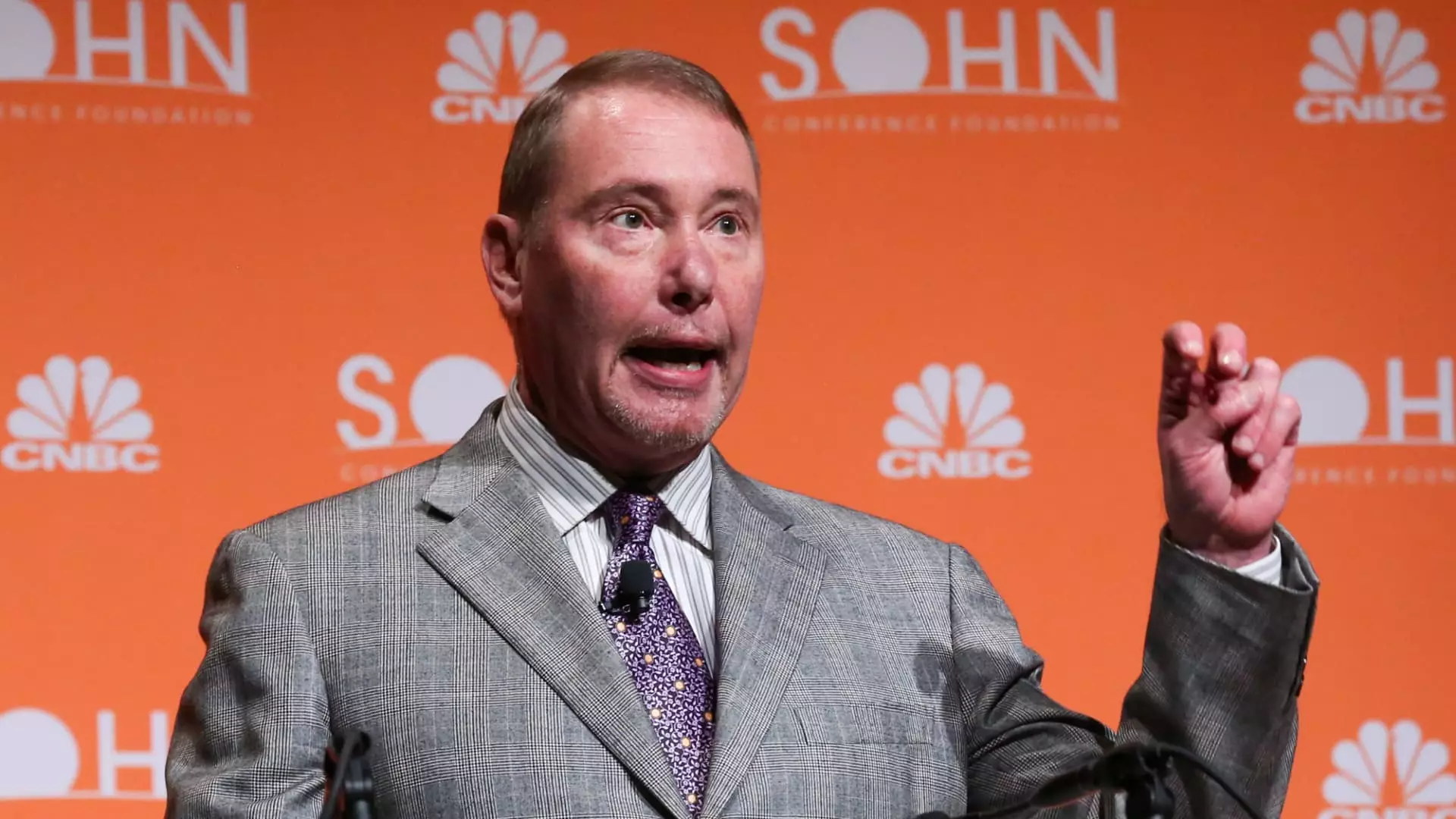In a recent statement, Jeffrey Gundlach, the CEO of DoubleLine Capital, provided his forecast on interest rates, foreseeing a conservative trajectory for the Federal Reserve’s monetary policy in 2025. Contrary to more aggressive predictions within financial circles, Gundlach anticipates that the Fed may only enact one rate reduction next year, potentially extending to a maximum of two. This cautious outlook reflects the Fed’s current approach of prioritizing data over hasty policy changes, particularly regarding the vital indicators of labor market stability and inflation dynamics.
Gundlach shared his insights during an appearance on CNBC’s “Closing Bell,” where he expressed his belief that, while cuts might be in the cards, the frequency and magnitude would remain limited. He clarified, “Maximum two cuts this year,” specifying that although two is conceivable, one cut is a more grounded expectation. This reflects not just his analysis but a broader sentiment regarding the Fed’s strategy amid a robust economic backdrop.
On the same day, the Federal Reserve decided to maintain its interest rates, following a series of cuts that characterized the latter part of 2024. This decision, as emphasized by Fed Chair Jerome Powell, underscores the central bank’s deliberative approach to monetary policy. Powell highlighted that the Fed is not in a rush to modify its stance, a sentiment echoed by Gundlach. This suggests that the Fed’s leadership is particularly vigilant regarding unemployment rates, acknowledging that stability in this area is crucial before considering further rate adjustments.
Gundlach’s perspective indicates that the path to future rate cuts will be gradual rather than swift, asserting, “It’s going to be a slow process…” His comments reflect apprehension about potential changes in the economic landscape that could jeopardize job security or inflation rates, which, if disturbed, could lead to an unanticipated shift in monetary policy.
Beyond interest rates, Gundlach expressed skepticism about the current landscape for high-risk investments, advising caution. He articulated concerns about rising long-duration Treasury yields, suggesting that the benchmark 10-year yield could see further increases—a stark realization given that it has already risen by about 85 basis points since the Fed commenced its rate cuts. Gundlach posits that, despite some stabilization, “I think that rates have not peaked on the long end,” hinting at a potentially turbulent environment for fixed-income investors.
This forecast casts a shadow on the appeal of high-risk assets. As evaluations reach potentially unsustainable heights, Gundlach encourages a reconsideration of investment strategies, particularly for those exposed to volatile assets. His warning about high risk during a time of heightened valuations serves as a caution to investors, suggesting that prudence may be necessary to navigate the uncertain financial landscape ahead.
In sum, Jeffrey Gundlach’s insights offer a sobering yet realistic view of the economic horizon. With a conservative outlook on impending interest rate changes and a call for caution regarding higher-risk investments, his analyses serve as a reminder of the complexities and potential pitfalls within the current economic environment. Investors are urged to remain vigilant, considering the implications of these predictions as they navigate an ever-evolving financial landscape.

